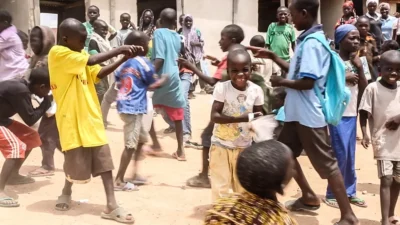The moral problem attendant on many deployments of the concept of karma is that it has been used to “blame the victim.” That is, karma has been used to explain the suffering of those who are victims of events—like social oppression, disease, war, and famine—as in fact of their own making. That explanation goes like this: An individual sentient being is a collection of causal forces that, over time, constitute a chain of cause and effect that itself goes by the name of the individual being. Some of those forces are actions, which is the proper meaning of the Sanskrit word karma, and includes bodily, linguistic, and mental events guided by an intention. Those actions are taken to be the predominant determinant in producing the suffering or happiness of that chain-of-cause-and-effect qua being in the future. Thus, any suffering and any happiness that a being experiences is a result of actions taken farther back in the chain, or in everyday terms, by its past self. This use of the concept of karma to victim-blame is endemic to Buddhist thought in some places and times. And this idea does have roots in some Buddhist texts and teachings. But is it a good account of karma? Are there other accounts of karma in Buddhist texts that might make more sense of things like social oppression, which clearly has roots in the actions of other beings?
If we turn to an unexpected place, we do find resources that fruitfully reorient our understanding of karma. This unexpected place is the idea of space or land. I want to first think about space or land with a non-Buddhist thinker whose ideas can illuminate a certain Buddhist conception of space. I have long taught a unit on space and time as analytic categories in the study of religion in my introductory religious studies course. Among other readings, I assign two chapters from Vine Deloria Jr.’s God is Red on Native American religions as organized around space. Recently, upon my yearly re-read of these chapters, I was startled to see there something I had previously overlooked. In the following passage, Deloria offers his account of what is happening when non-Native Americans go seeking in pursuit of Native spiritualities. About these non-Natives, he writes:
… in a variety of ways the American public, searching for a sense of authenticity that it cannot find in its own tradition, is turning to American Indians as it wishes to visualize them. It is not simply the nobility of the novelists or the tragic vision of the historians that America is seeking. In a very real sense, the quest is for the religious insight of American Indians and the feeling of authenticity that Indians project. In seeking the religious reality behind the American Indian tribal existence, Americans are in fact attempting to come to grips with the land that produced the Indian tribal cultures and their vision of community. Even if they avoid American Indians completely, those Americans seeking a more comprehensive and meaningful life are retracing the steps taken centuries before by Indian tribes as they attempted to come to grips with this land.
I was surprised not just that Deloria interprets these non-Native searchers generously in this way, as genuine seekers of something real rather than mere exploiters of the culture and history of the Natives they simultaneously oppress. What I had not seen before is the way Deloria attributes to the land itself a “religious reality” that Native peoples had already “come to grips with” and that we latecomer American settlers are now trying to do the same. We might think Deloria’s point is that this religious reality exists in the relationship between Native peoples and their lands. And while Deloria elsewhere strongly affirms that relationship and its centrality to Native life, this passage presents an arguably more basic claim: that the land itself has its own religious reality, one that is not determined entirely by the people who now live on and in relationship to it. Native peoples, having preceded settlers to this land by millennia, are the ones who know what these realities are and how best to live intimately with them. The settlers now poking around the edges of Native communal life and practices are in fact, as Deloria describes it here, seeking to learn something about the reality of the lands they too now live with.
So how does Deloria’s concept of the religious reality of the land help us think about the karma of place? To approach these questions, I engage the help of the Yogācāra school of Buddhist philosophy. It is considered one of the major textual traditions of Mahāyāna Buddhist philosophy in South Asia, and was arguably the very sea in which many of the fish (schools, thinkers, texts, practices) of East Asian Buddhism hatched and first swam. Much contemporary writing sees in the major concepts of the Yogācāra text tradition something like an idealism drawn from the early modern period of European philosophy. For example, one philosopher who offers an idealist interpretation of central claims of the tradition, has written that Yogācāra offers a “contrastive ontology” which assigns “to the mind and to mental phenomena … a fundamental reality independent of that of external objects, while denying it to apparently external phenomena and assigning them a merely dependent status, a second-class existence as objects of and wholly dependent upon mind.” But this kind of take on the school ignores some of its crucial insights. One of them is the way the school rethinks the concept of karma and situates land within that rethinking.
In particular, some Yogācāra texts repurpose a term that was used in pre-Yogācāra Buddhist thought to distinguish karma that manifests, or is revealed and made known to some mind, from karma that remains hidden. The idea of hidden karma was posited to make sense of the fact that there is usually a time-lag between when an action is performed and when its consequence, its fruit, is borne. Non-manifest karma, which is always expressed in material form, carries through time the potentiality jumpstarted by the action, until the moment when conditions are ripe for its manifestation. The term for manifest that the Yogācāra tradition repurposed is the Sanskrit word vijñapti, best translated as a revealing or manifesting of karma, or a making known of the intentions of past beings. Taking up this concept, the comprehensive, systematic and influential early Yogācāra text A Compendium of the Mahāyāna offers a list of eleven kinds of karmic manifestings. While a good portion of these eleven are keyed to beings as individuals (e.g., the karma that manifests in moments of perception and cognition, where the perceptual and cognitive faculties are unique to each individual being), one of the karmic manifestings is specifically named as the manifesting of shared karma: the karmic manifesting of space or place. The text itself defines space in terms of an old Buddhist distinction between the world of sentient beings and the receptacle world. The world of sentient beings refers to all beings who can feel, while the receptacle world is the space where those sentient lives unfold and that which they unfold in relation to. In Buddhist thought, these two worlds together comprise the whole world, and it has always been understood that the karma of the beings in a given receptacle world is reflected in the features of that receptacle world. Therefore, instead of just calling this site of karmic manifesting space or place, I translate it as “lifeworld,” since here space is not a neutral container, but is rather the place of life itself, or the body of life, if you will. A Compendium of the Mahāyāna gives two examples of what it means by the shared lifeworld: “like a village,” it says, “or a garden.” Villages and gardens are of course social spaces, the space where sentient lives proceed in relation to each other. The text’s claim, then, is that the shared lifeworld is fully the result of the past intentions of past beings. Rather than seeing karma as manifesting only in the happinesses and unhappinesses of individual beings, the Yogācāra textual tradition sees it manifesting also in our shared lifeworlds: villages, gardens, cities, forests, prisons, street corners, schools, et cetera.
The idea of karmic manifestings as presented in Yogācāra thought is of a piece with the concept of subject-object nonduality, which refers to the fact the subject of a given experience arises from the same set of causal factors as does the perceptual or cognitive object of that experience, even while they are commonly experienced as distinct. Indeed, experiencing them as distinct is the basic form of delusion according to Yogācāra thought. For this reason, the subjectivity that encounters a shared lifeworld is therefore not distinguished based on what being is partaking in that subjectivity. It is, rather, distinguished by its object, which is the shared lifeworld itself. This means that when you and I encounter a field, a river, a mountain, a city, a prison, a school, a village, or a garden, we share a subjectivity just insofar as we share the lifeworld experienced in that encounter. Because we share the place itself, we share its karma. The land has, as Deloria puts it, a religious reality of its own.
On this Yogācāra account of karma, every being inherits and is responsible for the karma that is expressed in and through whatever shared lifeworld that being lives in relation to. Whether we: survey a field, river, or mountain in search of riches or for the sake of parceling into private property; walk a field or wade in a river with the eagle eyes of a hunter; or climb a mountain path retracing the steps of our ancestors, in all cases the place remains itself, a full manifestation in the present moment of the intentions of the many beings who have lived in, on, and with it. We inherit the fullness of the place, the reality of the effects of the intentions of its many past inhabitants, human and nonhuman, even if our vision of it and way of being with it remains severely limited. We can think about Deloria’s reference to the religious reality of the land in relation to this idea of shared karma as manifested in our lifeworlds. On this Buddhist account of place, the religious reality of the land itself is that it holds, and manifests, all the intentions of all the past beings who have lived in that place. It is our key to our many ancestors, human and nonhuman.
But within the logic of all Buddhist karma teachings, karma is not something simply to be known and acquiesced to. It is, rather, to be known for the sake of avowing and overturning it. It is a description of what gets us into problems, rather than a description of a neutral state of affairs. Therefore, our moral task with regard to places is to discern the karma of the place by seeing where there is suffering in it, and to take up our position of responsibility with regard to that suffering. This means we are morally obligated to dissolve the common boundaries that apportion various sufferings and happinesses to distinct groups of beings within shared places. If my neighbors suffer, that is the karma of this place, and it is my karmic inheritance too. If my racial, ethnic, class, or religious “other” suffers where I am happy, that is the karma of this place and my karmic inheritance too, doubly so if their suffering and my happiness share a causal matrix. The karma of place pushes us well past the victim-blaming that lies downstream of strictly individualized accounts of karma, into an embrace of a universal responsibility for all that is made manifest in our particular, shared places.













